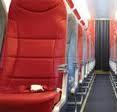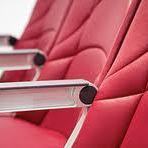
A british aerospace start-up, Acro Aircraft, wanted to develop a product that would bring the aircraft industry significant savings and give themselves them a real competitive edge. One of the biggest cost factors in aviation is fuel, kerosine. The consumption of kerosine is directly related to the weight of the (loaded) airplane. So it is tradition in airospace land to focus on weight reduction, less weight is less cost and direct increased value to the customers (both consumer and the airlines). And of course the biggest environmental cost of a aircraft is in its use phase, the consumption and combustion of kerosine.
Standard seat backs of aircraft chairs are between 50-100mm thick and are made of cushioning attached to a metal frame. FactoryDesign was asked to reduce the seat weight without sacrificing structural integrity and airworthiness. Airworthiness regulations can be very limiting in the design of aircraft components, i know out of first hand. They started with the passenger and ergonomics and found a solution in creating a seat back shell that wraps around a metal frame, giving it only a thickness of 3 mm. Add to this the E-leather upholstery of 3-5mm and you not only have a comfortable chair with a back thickness of only 6-8mm but then also the option to either add an extra row, reducing CO2 emissions per passenger even more or increase the distance between rows and thus increase passenger comfort by offering more leg space.
There supply chain is 100% UK which also reduces the environmental cos of the transportation of parts.
If a Boeing 737 uses these chairs instead of traditional ones it saves 950kg on Aircraft weight resulting in 150-200.000$ savings per year, roughly 238.000 liter kerosine or incl combustion over 700 ton CO2 emissions per plane!
I love this as and EcoValue example this is extra value for the customer, in increased leg space as well as reduction of eco-cost! Well done and a well deserved Design award 2011 winner!

Comments by our Users
Be the first to write a comment for this item.